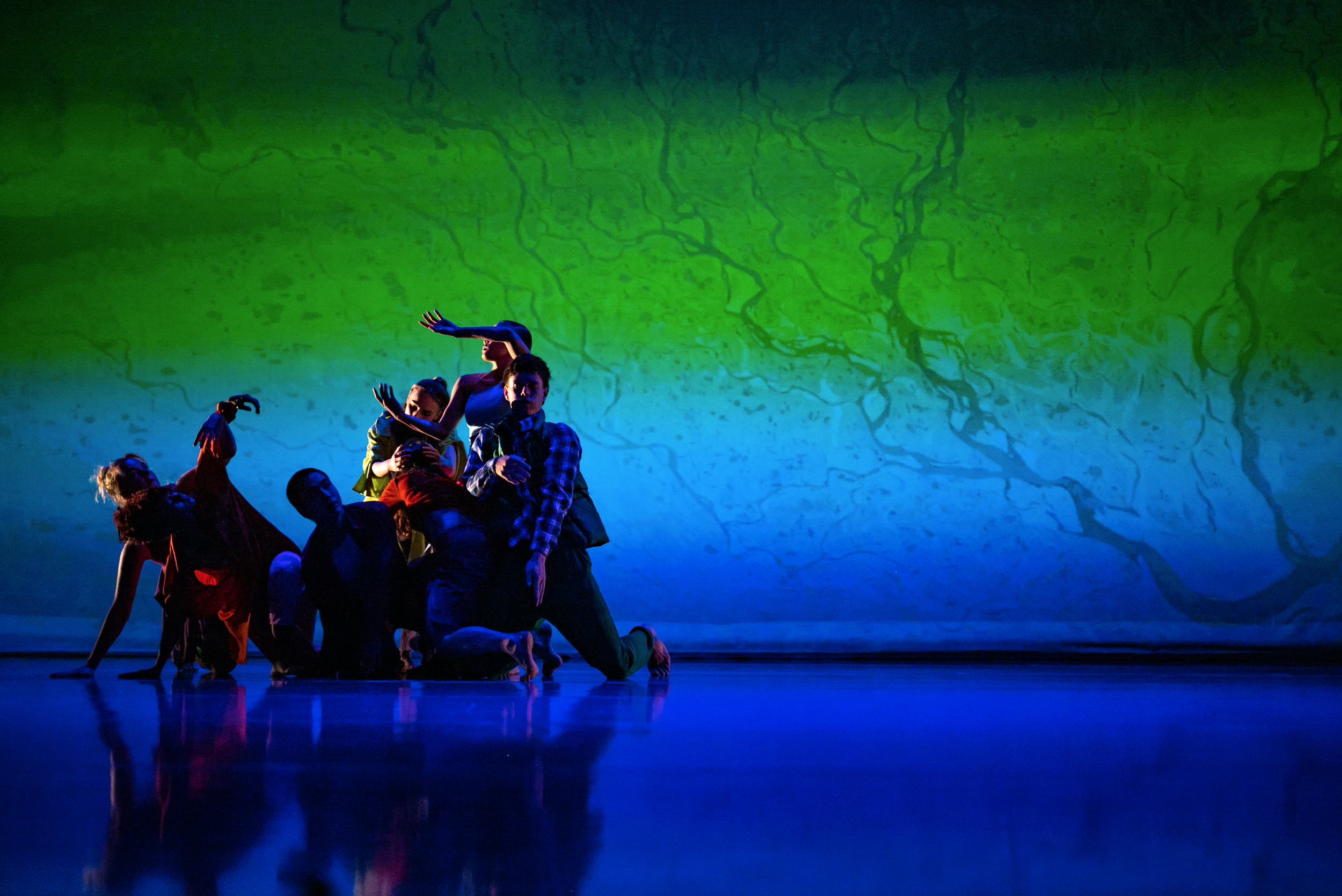Dance review: The Impossible Has Already Happened conjures melting glaciers and climate change through projected imagery and fluid movement
MascallDance-Footnote New Zealand Dance coproduction takes a gentle, humanistic, and dreamlike approach to global warming
The Impossible Has Already Happened. Photo by Caio Silva
MASCALLDANCE AND FOOTNOTE New Zealand Dance’s collaborative The Impossible Has Already Happened plays out like a dream. This is a vision in which the dreamer senses there’s a dark, impending ending, but it’s too suppressed to do anything about it.
The new show—which is headed out on a B.C. and Canada tour after its one-night show at the Anvil Centre here—is a multidisciplinary contemporary-dance work that includes spoken word, digital and physical set design, and a blend of pre-recorded and live music to support the theme of climate change and our relationship with water. The powerful and haunting messages are often delivered in a quiet and subdued manner, perhaps as part of creators Jennifer Mascall and Claire O’Neil’s efforts to illustrate society’s passive behaviour when it comes to environmental collapse.
Actor Tobias Macfarlane represents the earth’s water. Even before the show begins, we see the dancer crawling across the stage bearing a large wooden frame and a sack. Throughout the production, the frame is used as a skeleton of a house, symbolizing “home”. When the show begins, we see Macfarlane trudging across the stage, hauling this house and bag of possessions along. Video of glaciers melting plays on the screen at the back of the stage, perhaps a reference to the end of the ice age. Because soon after, four dancers enter, representing the arrival of humans.
The dancers—Allison Brooks, Ysadora Dias, Marisa Gold, and co-creator O’Neil—move and spin around as they discover the space. Eventually, Dias becomes the first to use water. She steps onto Macfarlane’s back and he welcomingly takes her on a journey. While Dias looks into the distance with wonder, perhaps at the possibilities that water can provide, the water (Macfarlane) observes her and happily lets her “drink” him in.
The stage is set for the next hour, in which we see the dancers continuing to discover new ways to use water, and Macfarlane continues to curiously observe them, offering much commentary. Macfarlane’s personable presence makes for an engaging “water”, and he’s great at delivering touches of humour throughout his spoken dialogue. For example, when the dancers speak about how scary it can be to be caught up in aggressive ocean waves, Macfarlane muses about how people often seem to have a hard time meeting him. He also expresses curiosity about how people insist on drying themselves off after being water, even though they’ll eventually get wet again.
There’s much to enjoy about the onstage action. Mascall and O’Neil’s choreography sees continuous motion spanning the stage, forming fluid shapes and formations. The range of dance styles at work here spans O’Neil’s free-flowing, athletic movement, and Dias’s intricate choreographic detailing and body isolations. The performers are accompanied onstage by fiddler Kathleen Nisbet, who seamlessly inserts herself in and out of the action.
Set and lighting designer Marcus McShane creatively captures the visual theme of ice and water. Digital graphics, photos, and video projections conjure flowing and frozen imagery, at one point even taking us on a rocky boat ride. The house skeleton is eventually raised on stilts, perhaps as a result of the melting ice caps. One of the show’s most unique traits is the use of frozen ice lights that melt throughout the show, representing the impending consequences of climate change. Eventually, Macfarlane dons an astronaut suit, as water prepares to leave the earth.
As gloomy as all of this may sound, there’s a humanistic aspect here. At one point, the four dancers sit onstage and pass a microphone around as they share personal stories that are tied to water. And the tonality of the show overall is often gentle—it’s an easy show to watch. With the dancers immersed in their movements as Nisbet accompanies on the fiddle, the show sustains that dreamlike quality. But as beautiful as this dream may seem, we can be certain that Mascall and O’Neil’s call to action is to wake up before it’s too late.













